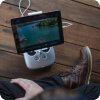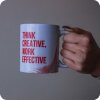
Generally speaking, the job of a web designer encompasses all the tasks related to the creation and design of a website. To accomplish these tasks, the webdesigner must master a number of dedicated software and tools. He or she must also respect a few indispensable steps to successfully complete a project and satisfy his or her clients. If needed, he can also find inspiration on various platforms such as Dribbble or Behance.
The Adobe suite: the essential tool for web designers
Today there are many software and tools dedicated to webdesign. But if there is one that every webdesigner worthy of the name should absolutely master, it is certainly the Adobe suite. Approved by professionals, this software solution is one of the bases for webdesigners. Rest assured, it is not necessary to master all the software that make up the suite at your fingertips. You will learn the subtleties of each one according to the specificities of the projects you will be working on. Adobe Photoshop is the most versatile and complete software for designing web templates. It is rightly reputed to be a “super tool” for the web. And for good reason, it not only allows you to retouch a photograph but also to edit an image. It is also ideal for creating illustrations, editing, matte painting, etc… You can also use it to create specific graphic elements for the web that can then be integrated into html. In addition to the Adobe suite, there are many other tools that can be very useful in web design. Like Anthony Boyd’s mock-ups, some tools are available for free online. It will be important to choose the ones that will allow you to meet your clients’ specifications.
A few examples of graphic-inspired sites
Webdesign is a field that requires a great deal of creativity. To avoid the white page syndrome, in other words any lack of inspiration, you can draw ideas from certain platforms. It can be a social network, a webzine, a blog … Among the best sources of graphic inspiration are among others:
Dribbble
Created in 2009 by two graphic designers, Dan Cederholm and Rich Thornett, Dribbble is a social network entirely dedicated to graphic and web design. It gathers images of projects and portfolios as well as various creative works from numerous graphic and web designers. It’s one of the ideal platforms to visit if you lack inspiration on a project. You will find more than a thousand billion pixels of published visuals that you can love, share or simply save. Once you’ve found the inspiration, you’ll be able to share your work there too.
Behance
Dribble’s main competitor, Behance was launched in 2005 and is owned by Adobe Systems. It is a platform where professional web designers from the biggest art agencies can share their work. Hundreds of thousands of professionals exhibit their creations there. A true reference in terms of creative social networking, it stands out by the fact that it generates analytics that allow to bring up a trend.
Tips for finding inspiration
According to webdesign professionals, there is no point in stubbornly trying to find an immediate solution when you are out of inspiration. To revitalize your creativity, the best thing to do is to take a break and do something else. You can move on to another project or simply enjoy yourself by reading a book, watching a movie, listening to music or taking a walk or something you like. Without expecting it, you can find inspiration in the simple things in life.
The steps of graphic design
The brief
This first step is essential because it allows us to clarify the customer’s expectations. It is during this stage that you must establish the specifications, the structure of the site, the creation system corresponding to your needs (CMS or not) the estimate and the delivery schedule. Take care to clearly indicate in the specifications the objectives of the project, the type of website to be set up, the target of the site in question and the contents that will be proposed.
The research
This work can be done by the webdesigner as well as by the client. To go faster, the two can even work together. To find the right ideas, you can do competitive intelligence or go to graphic-inspired sites. Then, all you have to do is list what you like and what you don’t like.
The construction of the site map
In the form of an internal architecture or organization chart, the site map must present all the pages of the future site as well as the links that will lead from one page to another (the site tree). Each page must also have in its wireframe, i.e. its functional model, essential elements (header, menu, share button…). And this, in addition to the visual elements of the client and his logo. If the basic presentation is generally the same, the organization of the columns, the choice of colors and dynamic animations will make the difference.
The choice of color
Unless you have a precise graphic charter, you will have to choose the colour palette that will be used on each page, but also the fonts, the presentation of the menu and the type of navigation. The latter must be intuitive to provide a pleasant user experience.
Development
This phase occurs after the validation of the model by the client and corresponds to the webdesigner’s working time to create the first version of your website.
The test before delivery
Before putting the website you have designed online, make sure that all the elements of your site are functional and responsive and that no inattention such as a spelling mistake has crept in on a page.












